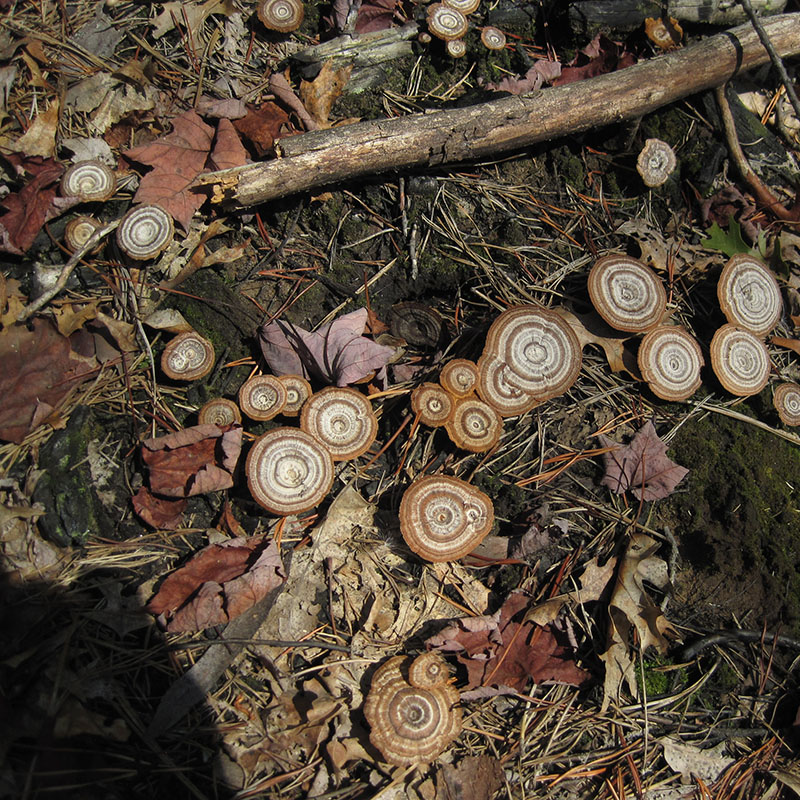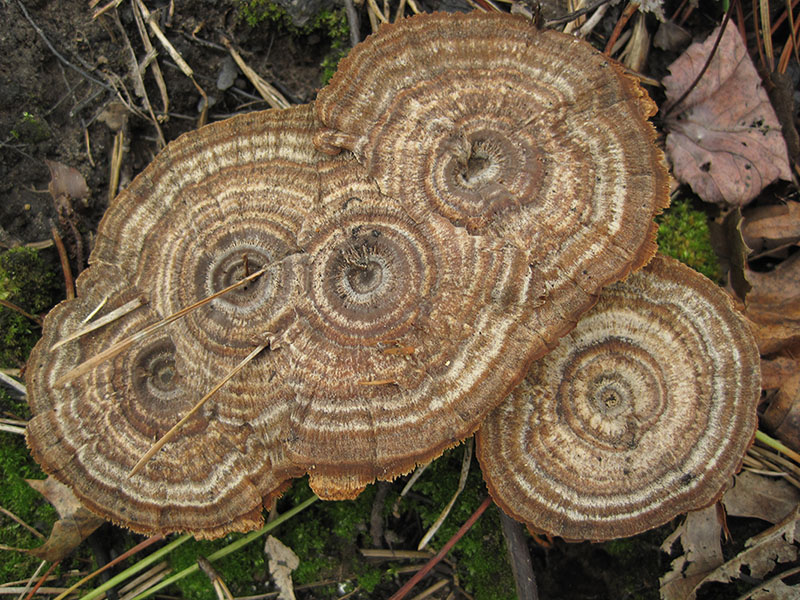Plant of the Week
 Coltricia Perennis Colony in severely burned area.
Coltricia Perennis Colony in severely burned area.
Tiger's Eye (Coltricia Perennis)
By David Taylor
This fungus (mushroom) is wide spread in North America and Europe. It is usually associated with forests containing pine. It can be found throughout the growing season in moist forest, but may not be seen in drier sites until after a series of rains. It frequently is found in disturbed areas such as along gravel or dirt roads, trails or in severely burned areas in the first year or two following the burn. Occasionally it is found on rotting wood.
It is a member of the family Hymenochaetaceae, a group of fungi that contains many species causing heart rot, cankers and disease in both conifers and hardwoods. This family is in the Basidiomycota, a large group which hold in common spores produced on structures called basida. Tiger’s eye appears to be ectomycorrhizal which means it forms a connection with the outside of the roots of a plant or tree. Through this connection, the fungus gains carbohydrates (sugars produced by the plants) from the plant and the plant gets minerals from the fungus. This fungus is known to form root connections with pines, oaks, beeches, and chestnuts.
This particular species of fungus increases its size by growing new fungal filaments called hyphae at the edge of the cap. If it encounters another individual of the same species, it grows around it resulting in fused mushroom caps (see photo). It will also grow around sticks and other small material it encounters.
Tiger’s eye has very distinct bands of color on its 4-5 mm (~ ¼ in) thick cap. These are particularly bright while the cap is fresh, but fade to darker colors, then gray as the cap ages. If they persist long enough, algae will colonize them and turn them green. The underside of the cap is covered in round to elongate pores. Spores are produced on tissue inside the pores. Tiger’s eye is considered inedible. A related species, Coltricia cinnamomea, has diffuse bands of color and the cap is very thin, only about 1-2 mm (~1/8 in) thick.



